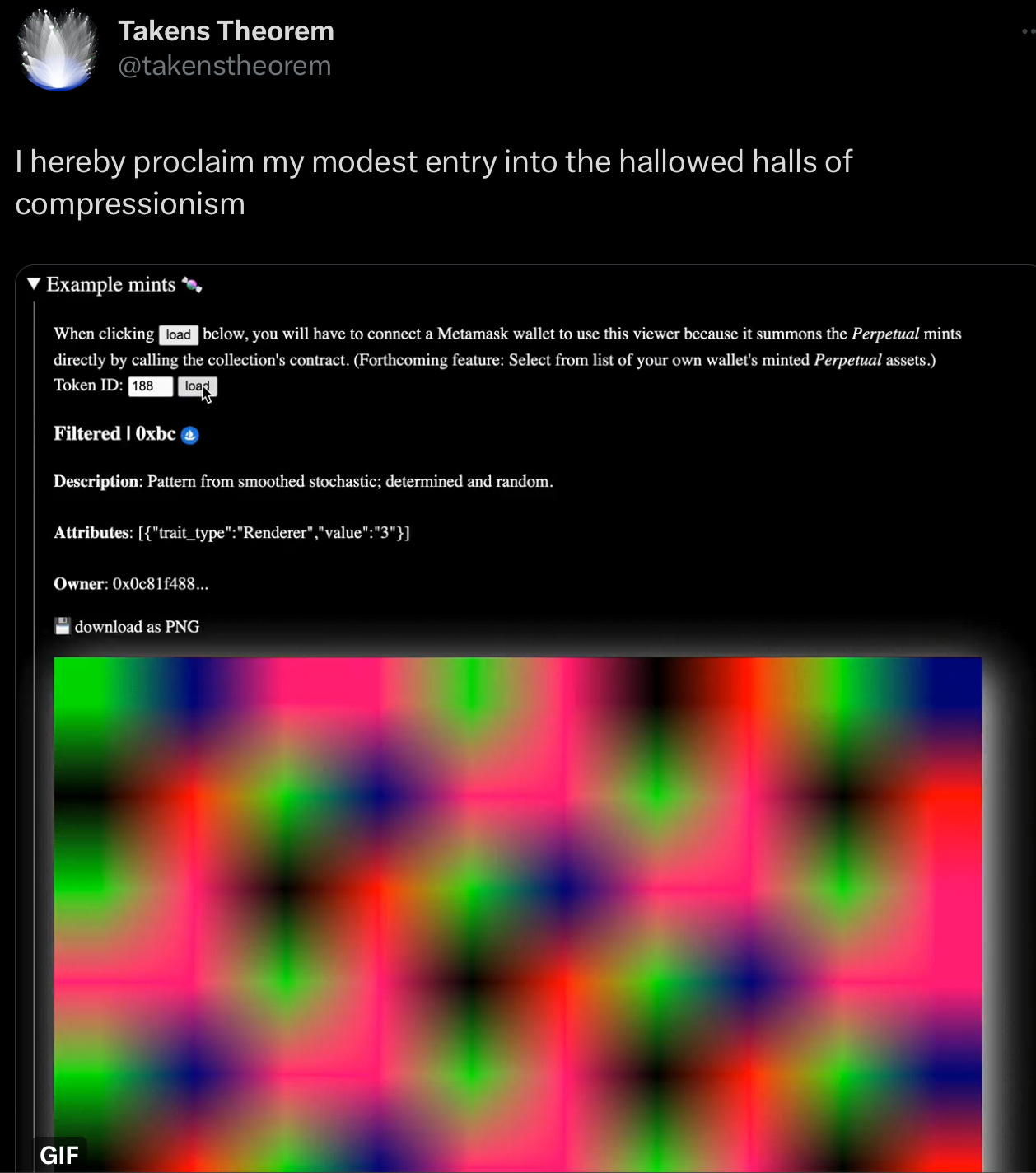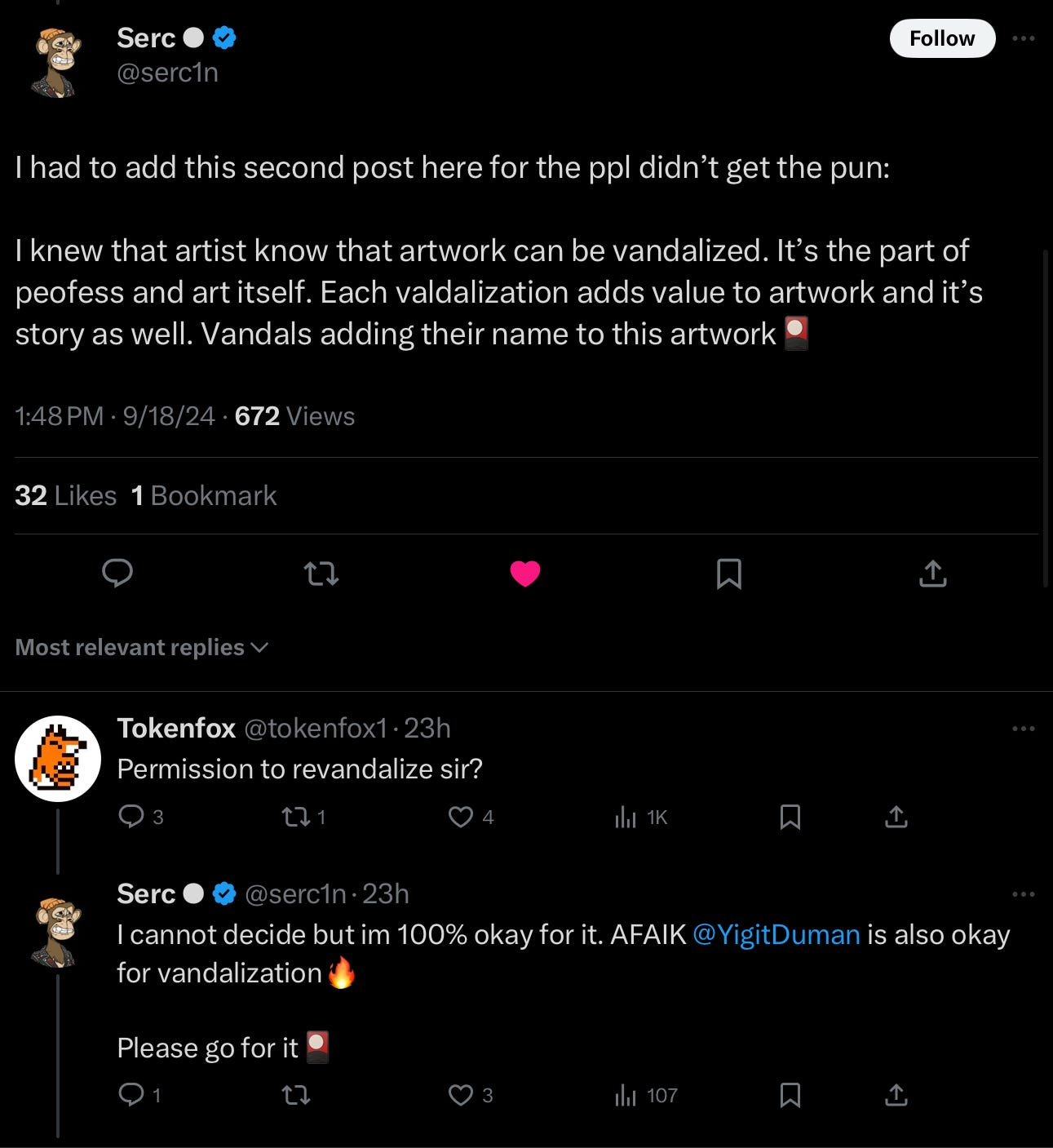Act 2 is About Context, Not Conflict
Also: Good vs Bad Preservation, NFT Compression Vandalism, and Thinner Books
A common story writing rule I’ve seen is that in act 2, one should dish out suffering to the protagonist. Even Kurt Vonnegut famously gave the following writing advice:
Be a sadist. No matter how sweet and innocent your leading characters, make awful things happen to them in order that the reader may see what they are made of.
While this generally makes sense for many narratives, I think it skirts around a deeper point. The goal of act 2 is to put the primary perspective of a theme into context with alternate and novel perspectives until it’s sufficiently exhausted.
I’ve touched upon it in, in a previous article:
A Framework for Good, Great, And Timeless Stories
There are many ways to think about storytelling. I want to present another; one of many. This framework disregards things like the meaningful characters, interesting arcs, and the style of writing. Instead it focuses on a macro framework for storytelling: the interplay between setting and theme.
The theme of a story is the core question it poses to the reader. The primary drive of the story comes from approaching the theme from different angles to an eventual resolution.
If Act 1 is the setup and mapping of the stakes, and act 3 is the resolution, then act 2 should play out like a marble race: you’ve primed it with stakes and potential energy then released the characters to unfurl the inevitable narrative.
The focus of act 2 is to put the characters and their perspectives of the theme in context with each other, not necessarily in conflict of each other. Some athletics provide great examples: a 100m sprint or a marathon doesn’t predominantly pit each athlete against each other (like in say Tennis or Rugby). They have to individually perform their best and it’s merely that the winner is tested in context with the other runners.
Yes, in more conflict-driven narratives, it’s more likely that adversity elucidates these themes, but it’s not required. This is common where a character has a strong worldview (perspective on a theme) and they get challenged by the opposite perspective.
eg, in Star Wars, collective action and belief in yourself, gets challenged by dismissal and promises of individual strength and power. Or, in the opposite case, in The Graduate, the individual triumphing over collective societal suffocation.
But, the inverse, where the story is not “being a sadist” occurs when a story revolves around a character whose strong worldview isn’t challenged by the alternatives, but rather where they influence the rest of the world.
Good examples are films like Paddington (Bear) or shows like Ted Lasso. An excessively kind and nice person comes into a world, and they believe in the goodness of people. Their niceness then in turn makes the world around them more nice and good. The main character hasn’t changed, but this character influenced the world around them.
But, it’s not just about the trope of an unchanging character influencing the world around them. Great act 2’s can also be about marinating and the exploration around a theme with minimal tension.
Before Sunrise is a happy, romantic film where two people spend a day and night in Vienna, hovering around themes of love, fate, and human connection. It asks questions of: What is *real* human connection? Is love a choice or unconditional? Is life lived intentionally or by watching it go by?
Lost in Translation is a moody film that speaks to the melancholy of loneliness, the self, and connecting with those who find themselves estranged from themselves.
Perfect Days is a meditative film that explores themes of the meaning of life and whether that’s found in routine, uncomplicatedness, and acceptance as opposed to ambition. Thomas Flight has an excellent study on this narrative juxtaposition (comparing Perfect Days to The Bear).
In all three scenarios above, it’s not necessarily that any character is changed by its events, or that they change the world around them. The films primary mode of engagement is to show the viewer the map of the theme they are embedded in. In Perfect Days, the protagonist’s blissful and mindful routine gets interrupted by his family, but instead of them changing him away from his life, he sticks to his simplicity and teaches a niece about a different way to live. Simply exploring a theme is sufficient. It’s the same joy that comes from walking the streets of a new city and just absorbing life. Or, wandering into small nooks and crannies in a new, grand open world adventure game.
Kurt Vonnegut also gave the following writing advice:
Every sentence must do one of two things—reveal character or advance the action.
If I’d rewrite this slightly, it would be to advise that every sentence must reveal and elucidate the theme or get closer to revealing more of it. One foot in front of the other around a new corner to see a new view.
So, when someone asks what the hell should happen in act 2, it’s not necessarily conflict, but juxtaposition and the reduction of the fog of war around a theme. Great narratives merely map the world around a theme. A common way to map it is through conflict (and sadistic suffering), but it doesn’t have to be.
Bonus Content!
This week is a bit busy as I have family visiting. It’s been good as I’m also still buzzing from my sub 2hr half-marathon from last week. My favourite moment was at the final 2km mark when I realised I was going to make my goal and played Major Tom (Coming Home), floating through the course. Runner’s high. What a vibe.
📺 Watching - Pachinko S2 + Rings of Power S2
📚 Reading - Huraki Murakami - Kafka on The Shore
💾 Links
Publishers Are Printing Thinner Books
Some publishers have started experimenting with smaller fonts and printing thinner books.
Printing costs have soared in the last few years, he says. The Covid-19 pandemic led to supply chain issues.
Meanwhile, paper manufacturers have been switching over to making cardboard due to the boom in the delivery businesses.
This has driven up the expense of producing books. In some cases Island Press has simply had to absorb the extra costs itself rather than passing them onto consumers, according to Mr Miller.
Initially he wasn’t sure about Sustainable Typesetting. But after seeing that a 19% reduction in pages could lead to at least a 10% cost savings, while readability actually improved, Mr Miller has become a fan.
Sounds generally like not a bad thing. I think in general, thinner/smaller books will become a larger trend in general because physical books is partly attached to the touch grass trend. Carrying a book with you is an identity marker and novellas and thinner books work better here.
Compression & NFT Vandalism
NFTs are the most fun when it’s technical and multiplayer.
A recent trend has been playing with compression: storing more in the smart contracts themselves in new ways.
Takens Theorem recent work encodes an imagine in BMP (inspired by earlier works such as Mandalas which I wrote about in Aug 2021), generated by the smart contract itself, and then to view it properly in browser, the smart contract *also* blows up into a larger SVG image. All on-chain (or in-chain) whatever word you want to use.
Continuing this work, Yigit Duman created a pixelated Rothko that uses balances as 256 bit storage space.
The balances in these smart contract were made immutable (only changeable by the artist), except for one quirk in the EVM: a smart contract can be forced to accept new ether if the previous smart contract selfdestructs itself. The artist knew this and hoped someone might be willing to take up this bait.
Unfortunately, a few hours later, it was vandalized completely to a black canvas. However, as with all good art, it’s about the narrative and context and NFTs Can’t Die, so this artwork will keep being vandalized and revandalized turning it almost into graffiti.
Good and Bad Preservation
I’m generally more YIMBY than not, but there are legitimate questions around environmental impact, gentrification + community, and preservation. What frustrates me is disingenuous arguments against development that center around fake environmentalism or poor concepts around maintaining “neighbourhood character”. It’s not wrong to consider, but when is it too far? I don’t know where that line is and thus I enjoy seeing discussions about it. Darrel Owens wrote a great piece on good vs bad preservation in urban development.
When historic preservation devolves into a niche club declaring the significance of places over the political or social will of the electorate as a whole, that’s when it goes awry. Especially when landmarking prevents more landmarks. The Transamerica Pyramid, Coit Tower, hell even the Golden Gate Bridge in San Francisco were derided for their appearance at ruining a historic view — until they were complete and becamethe historic view.
🎶 Music
Peter Cat Recoding Co - People Never Change
I’ve recently been trying to listen to more upbeat songs as opposed to the usually moody electronic music. This song is one such track I’ve had on repeat. Such a unique fusion of sounds. Enjoy!
That’s all for this week folks! Hope you have a good week and get to see a lovely sunset.
Simon






Excellent ideas. This also reminds me of this theory of Japanese fiction being about action/reaction rather than conflict. https://www.tofugu.com/japan/japanese-horror-structure/
Perfect Days has been my favorite movie of the year thus far, and you explain why it works dramatically very well.